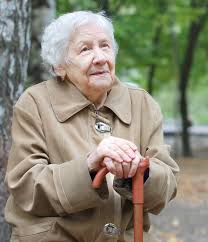
Study Reveals Why Older Adults Move Slower and Its Potential Diagnostic Benefits
Researchers from the University of Colorado Boulder have discovered that older adults may move slower partially because it costs them more energy to do so compared to younger adults. This new study, published in The Journal of Neuroscience, could lead to new diagnostic tools for diseases such as Parkinson’s disease and multiple sclerosis.
The study involved 84 healthy participants, split into two groups: younger adults aged 18 to 35 and older adults aged 66 to 87. Participants were asked to reach for a target on a screen using a robotic arm. The robotic arm operated similarly to a computer mouse. Analysis of the participants' movements revealed that older adults modified their movements to conserve their limited energy, unlike younger adults.
Dr. Alaa A. Ahmed, a professor in the Paul M. Rady Department of Mechanical Engineering at the University of Colorado Boulder and senior author of the study, explained that aging might reduce the efficiency of muscle cells in transforming energy into movement. As a result, older adults may recruit more muscles, which costs more energy, to perform the same tasks.
Additionally, the researchers examined how aging affects the brain’s reward circuitry, given that the body produces less dopamine as it ages. Participants used the robotic arm to reach a target on a screen, receiving a "bing" sound as a reward. Both younger and older adults reached the targets faster when expecting the "bing," but younger adults moved their arms faster while older adults improved their reaction times.
Dr. Ahmed noted that the older adults' response to rewards indicates that some aspects of the reward circuitry remain intact with age. However, older adults were more sensitive to the effort required for movements, suggesting age has a stronger effect on sensitivity to effort than to reward.
Researchers believe their findings could lead to new diagnostic tools for movement-related disorders such as Parkinson’s disease and multiple sclerosis. Understanding why movement slows with age and in certain disorders can help develop better interventions. Using movement as a biomarker is advantageous as it is easily accessible and noninvasive, potentially providing valuable insights into neurological health.
Dr. Clifford Segil, a neurologist at Providence Saint John’s Health Center, emphasized the importance of encouraging elderly patients to stay active, despite the higher energy cost. He suggested that more research on how the aging brain adapts to movement challenges would be beneficial.
Ryan Glatt, senior brain health coach at Pacific Neuroscience Institute, called for future research to directly link behavioral data with neurophysiological evidence to strengthen the findings. He emphasized the need for longitudinal studies and diverse population samples to understand how these mechanisms apply across different aging trajectories.
While the study offers important insights into why older adults move slower, further research is needed to explore the underlying neural mechanisms and develop effective interventions.